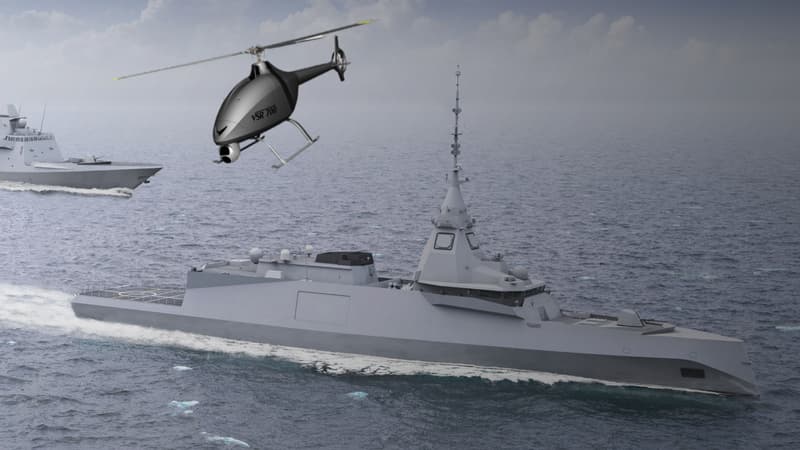Drones have long been seen as a necessary evil toward which armies dragged their feet. In recent years, conflicts have shown that it is essential to use and protect against them, whether in land, air and even naval combat.
At the Euronaval* fair, the message was delivered loud and clear with underwater, surface and aerial drones designed for maritime surveillance. We see much more of them than the classic boats and equipment and on supplier stands in every country. France is not left out. The General Directorate of Armament (DGA) announced several strategic projects, the future Thales anti-mine system (SLAM-F) and the Manta designed for the exploration and surveillance of the seabed up to 6,000 meters deep.
A mine hunting drone
The SLAM-F is a set of three drones: a small unmanned vessel for surveillance up to more than 300 meters deep, two underwater robots to locate and classify and destroy by placing an explosive charge remotely activated by a human. These missions have so far been carried out by mine hunting ships. France has seven of them, each with a 35-man crew, including divers to identify mines and lay explosive charges to destroy them.
The mission of the SLM-F is multiple. It will be responsible for protecting access to French ports, nuclear ballistic missile submarines (SNLE) and the Charles de Gaulle aircraft carrier, then the new generation as soon as it is launched in 2038. It could even be used for more offensive missions as well.
Up to 6000m deep
The Manta drone is more peaceful but just as strategic. Designed by the startup MarineTech and supported by the Innovait Defense Agency (AID), its mission is deep water exploration up to 6,000 meters deep and surveillance of the surface. It can also monitor submarine cables or serve as a scout for passing military or civilian ships.
The navy is also preparing for other types of missions. Airbus has unveiled the VSR700, an unmanned helicopter equipped with radars and cameras that enables Intermediate Size Frigates (FTI) to see beyond 100 nautical miles reaching heights of up to 6,000 meters. Its autonomy is about ten hours for intelligence, surveillance, targeting and reconnaissance missions on the surface, in the air or under the sea.
Ammunition and anti-drone laser
The navy also seeks protection from drone attacks, especially those that fly in swarms to attack or jam signals. In this area, it is Nexter, the manufacturer of the César barrel, that provides a solution. The manufacturer presented the firing systems developed with Thales, the RapidFire and the Narval. They can be armed with “smart” ammunition that once swarmed explodes, releasing hundreds of tungsten projectiles.
This ammunition has another advantage, its price. It only costs “a few hundred euros” a Nexter manager told us. The fight against small, often inexpensive drones is a global problem. To protect itself from “Costco” drones (referring to the discount store chain), the Pentagon has decided to spend $636 million on research and development of defensive systems.
France relies on Cilas Helma-P laser cannons for anti-drone defense. In June, the DGA has the L2AD market [Laser de lutte anti-drones] endowed with 10 million euros. Historical subsidiary of ArianeGroup, Safran and MBDA has just acquired 60% of this French company.
* The 28th edition of the Euronaval show will be held from October 18 to 21, at the Paris-Le Bourget fairgrounds
Source: BFM TV


